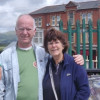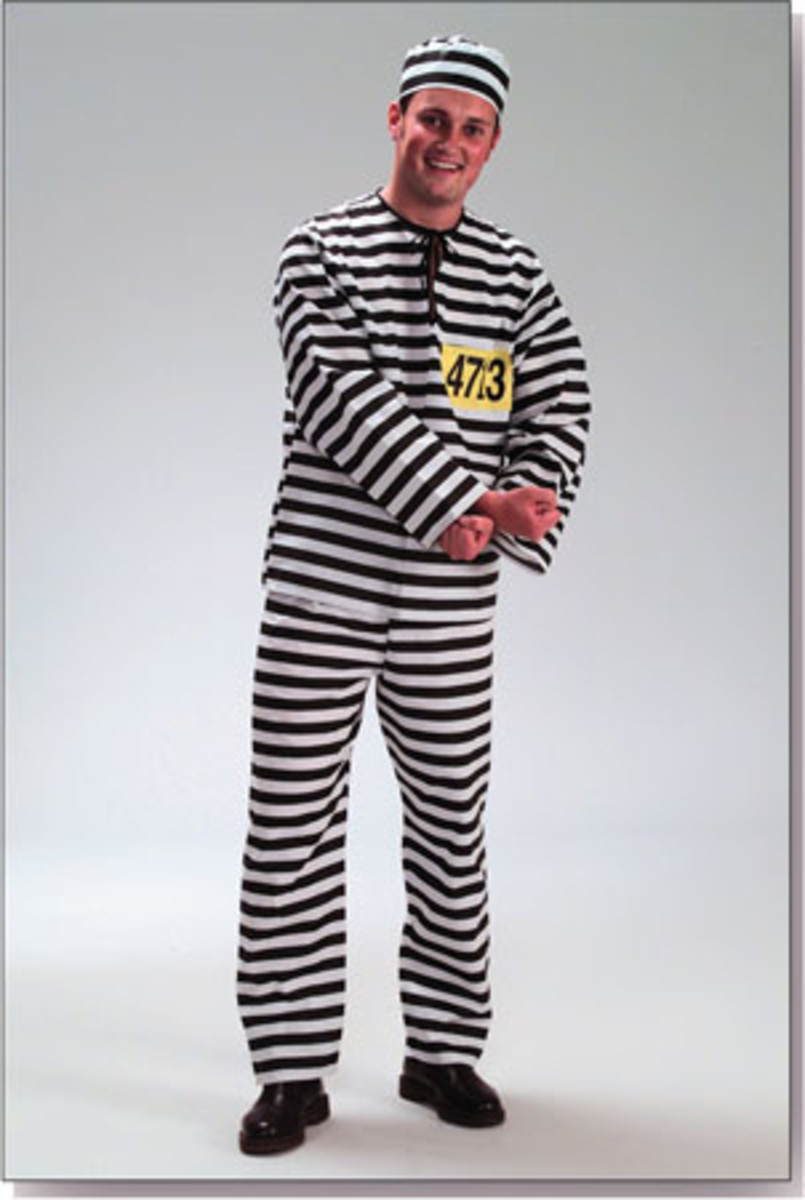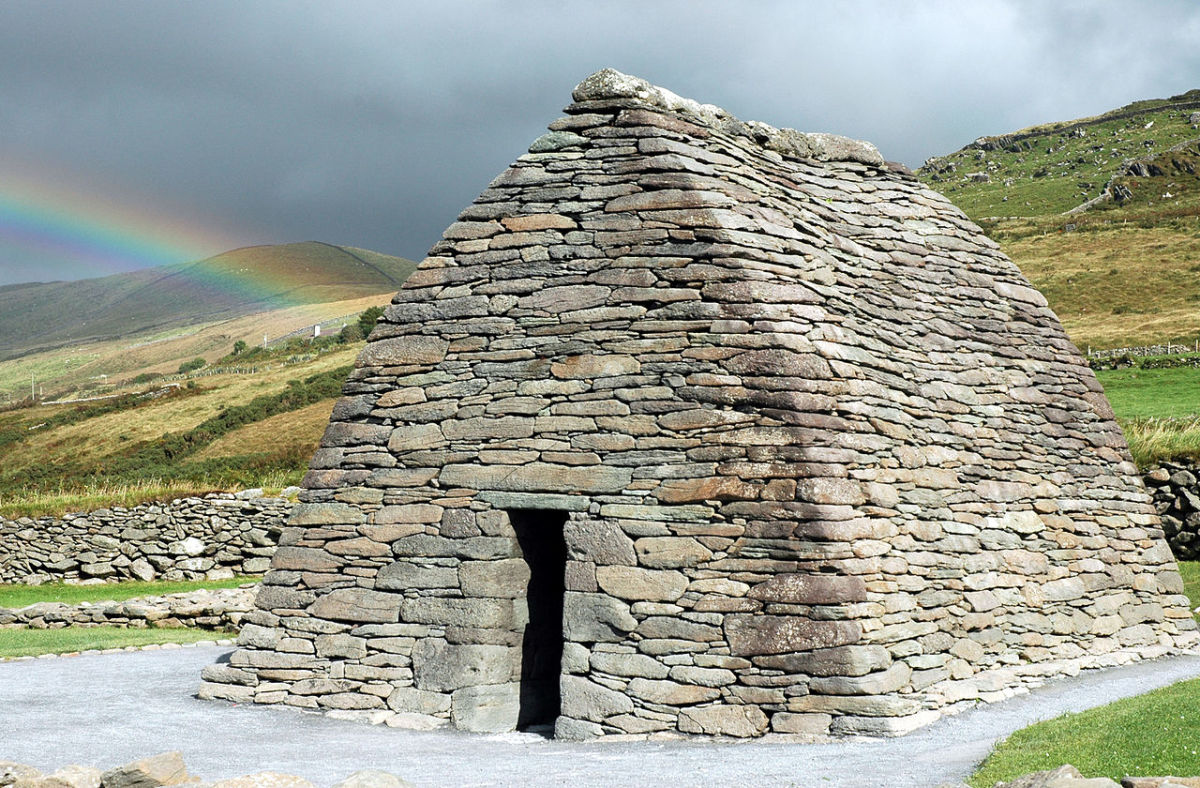The London Underground: 150 Years Young
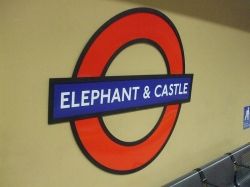
The London Underground Is Celebrating Its 150th Birthday!
Why am I including a picture of the 'roundel' of the Elephant and Castle Tube Station? Well, the reason is, I spent many Thursday evenings standing at this station, on the Northern Line, waiting for the train, to and from, London Bridge where I caught the overground train to Sydenham, the area I was living in at the time. With its elevators taking me way too far underground for my liking, it sticks in my memory more than any other station.
In 1973/74 I lived in London and most Thursday evenings I left my job near St. Paul's Cathedral and walked to London Bridge Station to catch the underground train to the Elephant and Castle, where my cousin lived at the time. On Thursday evenings (because neither of us had any culinary ability) we always ate the same thing: a concoction of minced beef and beans and a Ski yogurt for our dessert then we settled down to watch 'Top Of The Pops', the 'not to be missed' music chart show on BBC One.
After the show, we had a cup of tea, then I made my way to 'The Elephant And Castle' for the lengthy journey home. Thinking back, it was probably a little chancy travelling at that time of night by myself but they were different times, possibly more innocent, and I can't recall any unpleasantness.
This is my own little piece of Underground history and what follows is an attempt to cover some of the history and more interesting events of the past 150 years of the London Tube.
Please note that all the photos that appear in this article are courtesy of Wikimedia except for the one noted

Charles Pearson : A Visionary
Charles Pearson, who lived from 1793 - 1862, a lawyer and member of Parliament, formulated the idea of an 'arcade railway' for London in 1845.
A Short History Of The Underground - It Will Be Brief, I Promise.
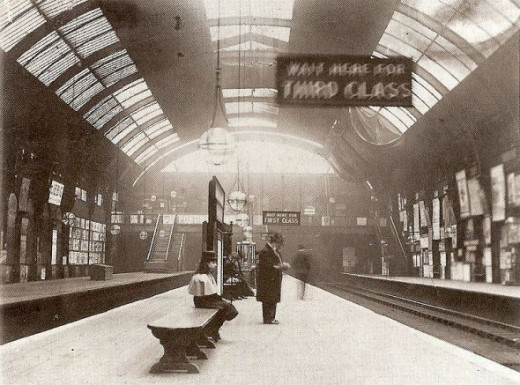
January 9, 1863 saw the first journey of an Underground steam locomotive on the Metropolitan line - the world's first underground railway! The carriages were elegant, befitting the time, constructed of wood and the inside lamps were lit by gas. Charles Pearson's vision had come to fruition. Although, the service only ran at 15 minute intervals, its opening must have made a huge difference to the daily life of the population of London.
It was significant that, due to the Underground, people were able to work in the City and live outside of the Capital, thus creating the suburbs of Greater London. Underground travel was created for everyone no matter what the class, so it became a leveler of society. It didn't always go down very but it did eventually become the norm.
Now 150 years on, the London Underground is still expanding with the £15 billion Crossrail construction project in the South-East with new stations and tunnels. It is a massive project, apparently, the largest in Europe.
Just recently it has been in the news, not due to its scale, but because skeletons, believed to be from the time of the 'Black Death' were found in Farringdon. They think they have found a pit where victims of the plague were buried. It is an important find for Archaeologists but also for scientists who should be able to find out more about the disease that killed millions of people.
For more information see: The Crossrail link in the 'Link Section' in this article.

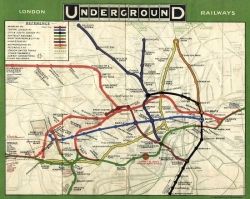
The London Underground Map
The first map of the intricate London Underground system came about in 1933 and was the brainchild of Draughtsman, Harry Beck (1902 - 1974). The large block letters, based on a font from Roman times, developed by Edward Johnston (1872 -1944) and Eric Gill (1882 -1940) are bold and easily visible to all.
picture courtesy of wikimedia
The Interior Of A London Underground Train, Circa 1940s
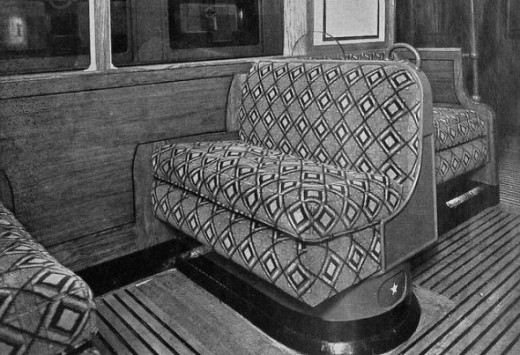
During the early 1950s my family would travel up from Penzance to London to see my Grandparents who lived in London. My brother and I still recall the feel of the upholstery, a bit itchy on the legs, and the musty smell of years gone by which was probably a combination of cigarette and cigar smoke, newspaper ink, oil and grease. Also, one of my first memories was of the ruts in the floor of the train. They look quite dangerous for little feet.
picture courtesy of wikimedia
The Modern London Underground Map - Expanding year by year.
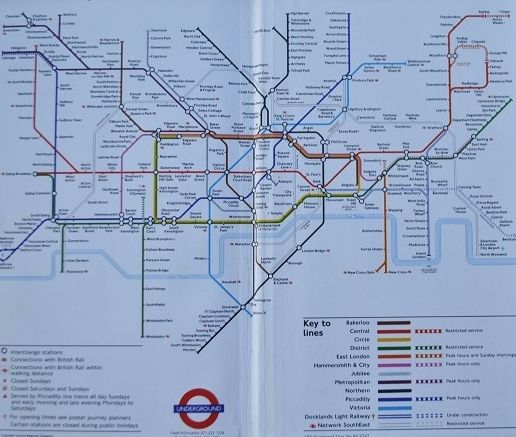
The map, in its modern form, has kept the tried and true concept. The fourteen lines (as of 2013) are still colour-coded and the print is clear. Also,maps of the line can be located in every station and on each platform. So, if your destination is Marble Arch, for example, you look for the red line, which is the Central Line, and then determine the direction of the train by looking at the Central Line's terminus stations. The terminus would be Epping in the Northeast, Ealing Broadway in the West and West Ruislip in the Northwest - simple!
picture taken by holly2 from the 'London Eyewitness Travel Guide', 1997 edition
London Underground Poster Art - 1905 London Underground Poster
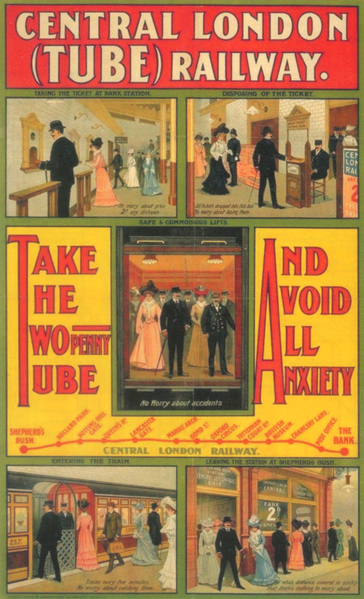
The artist of this poster is unknown but it dates from 1905. It was obviously commissioned to try to reassure the public that travel on the Underground Railway, called "The Tube" since 1890, was the best and least stressful way to travel. We take it for granted now but it must have taken some convincing to get the public to travel below ground.
The London Transport Museum currently has an exhibition of London Underground Poster Art called,
"Poster Art 150 - London Underground's Greatest Designs". It runs until October 27, 2013. This is at the top of my list of things to see, the next time I visit London.
picture courtesy of wikimedia
The London Underground At 150: - reliving the days of steam in January 2013
The youtube videos below commemorate 150 years since the opening of the London Underground on January 10, 1863.
Tragedy Hits The London Underground - After 75 Years Without A Mortality

It is quite remarkable that the first recorded deaths on the Underground didn't occur until 1938. It took a signal failure on the District Line on May 17 of that year to mar it's safety record. Tragically six people were killed and forty-five people were injured.
During World War II my mother remembers the overcrowded tubes and having to give the soldiers with, their huge back packs stuffed with kit, a wide berth to prevent injury. Londoners became used to the sound of the air-raid warnings and many ran for the nearest tube station for safety. The Underground became a place of community. I can't help imagining the thousands of fascinating stories about these times. There must have been a great deal of camaraderie but, at the same time, I'm sure there were many fights over the best spot to lay one's head. Of course, many could not face that feeling of going down into a sort of Hades and decided to take their chances above ground.
I remember my great Aunt Daisy telling me about waking up on the platform with a man's smelly feet in her face. Other members of the family recall the dank smell emanating from the walls and the waft and woosh of the trains entering and exiting the tunnels. Henry Moore, the painter and sculptor, famously made many wartime sketches including ones of people sheltering in the Underground.(See the link to his work during these years)
Then in October, 1940, while frightened Londoners huddled together for safety deep in the bowels of Balham Station on the Northern Line, a bomb fell killing 67, and most probably, 68 people. The platform flooded and outside a Double Decker bus plunged into the crater created by the bomb.
Unfortunately, more tragedy followed when 12 people lost their lives in a collision at Stratford Station in 1953 then in 1975 a crash killed 43 people at Moorgate Station. In 1987, a carelessly discarded cigarette butt, caused a devastating fire at King's Cross Station which killed 31 people.
These were tragic accidents, but in 2005, London, like New York on 9/11, lost its innocence when terrorists decided to target the Underground in the infamous attacks by suicide bombers which has become known as 'the 7/7 bombings.'Fifty-six people (including the four suicide bombers), lost their lives and several hundred were injured. The London Underground would never be the same again. It is now a place of suspicion with CCTV cameras everywhere. I wonder what the Victorians would think of this development?
picture courtesy of wikimedia
More Underground Trivia
Mrs. Springer gave birth to a baby boy at Highgate Station on February 13, 1944 while taking shelter from a Luftwaffe raid and this is how Jerry Springer, U.S. talk show host, entered the world.
The Angel: The Longest Escalator - and a few other interesting facts
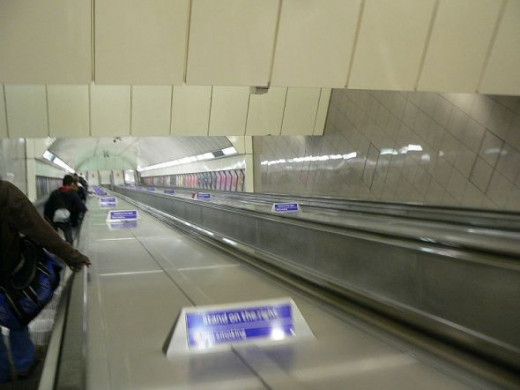
1. The Angel Underground Station has an escalator that descends 60 metres.
2. Roding Valley sees the least traffic and Waterloo Station, the most - 82 million people per year.
3. There are 270 stations on the London Underground and more are being added.
See the Link List for more interesting information.
picture courtesy of wikimedia
A Bit More Trivia
It was recorded that in 2007 one billion people travelled the London Underground System!
More London Underground Poster Art - 1924 Poster
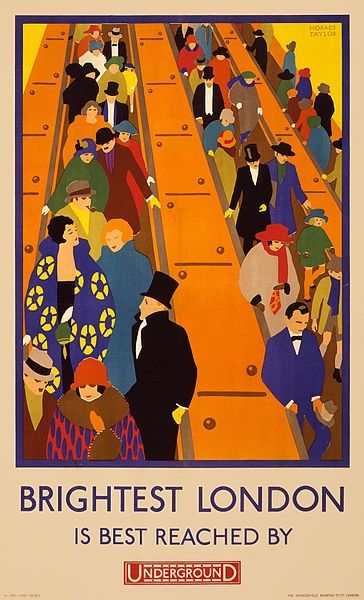
This poster, promoting the vibrant cultural life of the Capital, called "Brightest London Is Reached By" was designed by Horace Taylor, who was a cartoonist for the Manchester Guardian newspaper.
picture courtesy of wikimedia
The London Olympics 2012: - Stratford Station
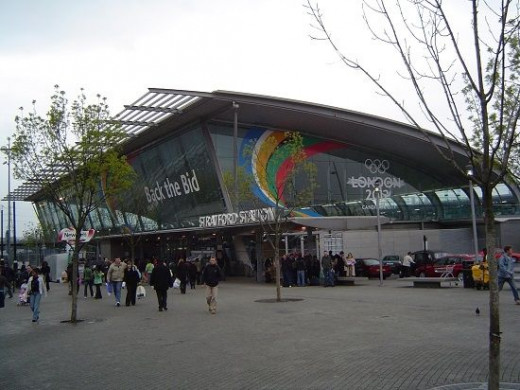
Stratford Station, on the Central Line, was expanded and refurbished in time for the London 2012 Olympics. The Olympic Park is located nearby along with the new Westfield Shopping Centre. The Underground was used extensively by the visiting crowds from every nation during the London Olympics.
picture courtesy of wikimedia
"Mind The Gap"
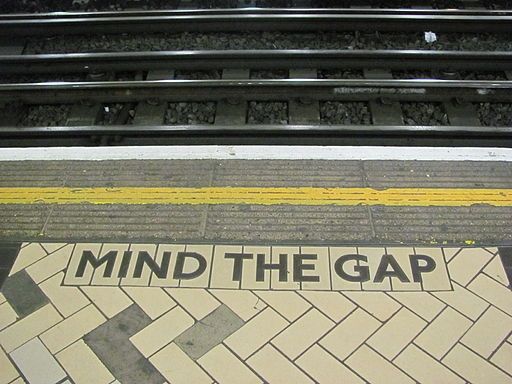
It can be a scary prospect for anyone not paying attention as they board a London Underground train so this announcement, is an important warning for passengers to make them aware of the dangers.
Neil Gaiman in his book 'Neverwhere', takes us into a sinister fantasy world of 'London Below' with characters like 'The Angel Islington', 'The Earl of Earl's Court', 'Old Bailey' and you literally do have to "Mind The Gap" because, "The Gap", is a beast that dwells under the streets of London. It will make you think the next time you look down into the darkness of the gap before you board the tube.
In the late 1950s, the actor, Oswald Laurence's voice was used to make the "Mind The Gap" announcement at many of the tube stations. The Embankment station was the last one to use his recording until it was discontinued but there are now plans to use his recording once again at the Embankment station due to the efforts of his widow. Have a look at the touching youtube video for more on this story.
Tim Bentinck, David Archer in 'The Archers' radio program, is the "Mind The Gap" voice on the Piccadilly Line.
picture courtesy of wikimedia
Mind The Gap
The London Underground at 150: - Useful Links
I think you will find these links packed with useful information about the London Underground past, present and future.
- Transport For London
150 years of 'The Tube' - The London Transport Museum
Near the Covent Garden Tube Station in the Victorian Flower Market. A visit to this museum is a must for any train, tram, bus enthusiast. There is also a shop selling transportation related memorabilia. - The Guardian Newspaper, 150 Years Of The Underground
The Guardian Newspaper's link to key moments in the history of the underground during its 150 years. - Henry Moore's drawings of people huddled in the Underground
Henry Moore sketched many scenes from the Underground during World War II - A massive construction project in south-east England
An interesting link in that skeletons from the time of the Plague were discovered during the digging. - London at 150, The Independent
Interesting facts about The London Underground
When you think of London, England, its intricate and sophisticated 'tube' system immediately springs to mind. Most of us who have visited this amazing city have had our own experience of the underground system. We would be very interested to hear about your own personal experiences of the Underground and let us know your favorite station or stations.
